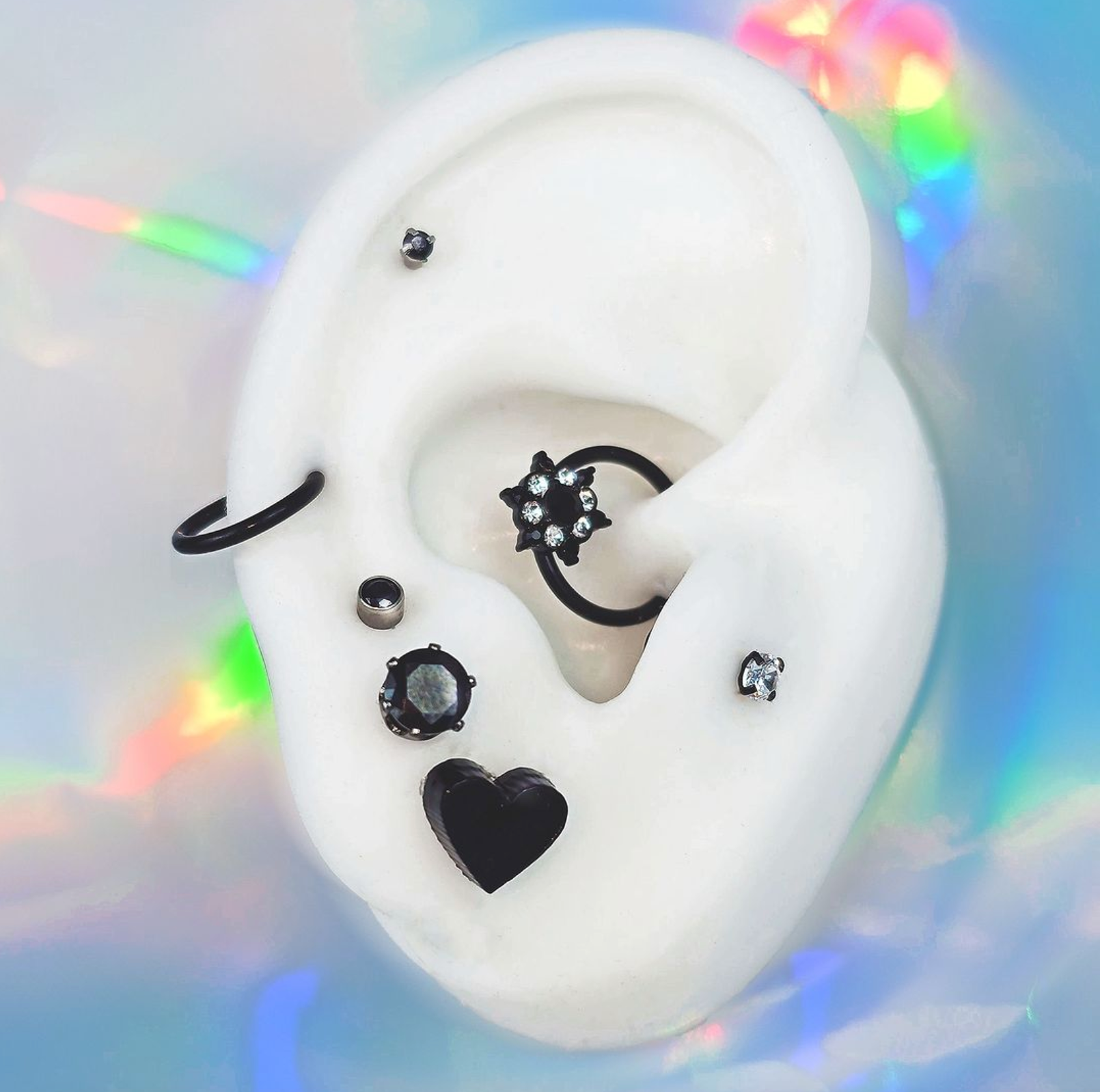Have you ever wondered what that little divot under your nose and above your lip is called? It’s called your philtrum, and it’s becoming a super popular place to pierce! The philtrum piercing, also known as a the “Medusa” piercing, is performed like a standard horizontal lip piercing, only above the lips instead of under them. It’s generally done using a 16 gauge labret, generally 8mm long or longer to accommodate the swelling. Using a labret is important because of the flat back – you always want to try and keep jewelry away from your teeth and gums to prevent dental damage.

The most problematic aspect of a philtrum piercing is the healing process. This one is notorious for troubled healing. Most notably, the initial swelling is far more pronounced than with a standard lip piercing. Also, the swelling and irritation have a way of flaring back up after they seem to have settled down, making for an up-and-down sort of healing process. That is actually quite normal in and of itself, however the Medusa seems to have a few more peaks and valleys along the way. (Still substantially less, however, than a snug piercing or cheek piercings.)
Another variation on this piercing is the vertical philtrum piercing, sometimes called a “Jestrum” piercing. This piercing enters through the philtrum but exits through the top lip itself. This piercing never makes contact with the inside of the mouth so there’s no risk of dental damage. This can be a perfect option for those who are especially concerned about their dental health. It also requires different jewelry, generally using a curved a barbell instead of a labret. It is virtually identical to vertical labret piercing, except that it is performed on the upper lip and not the bottom. The extra-lovely thing about a Jestrum piercing is that it also requires no oral aftercare. Since it never enters the mouth, you clean it like a standard piercing. No mouthwash needed, which can be a deciding factor for some people. It’s also far less common than its lower-lip counterpart, so if you’re looking for something that’s still a bit new and different, this is definitely a way to go.

Still another trending variation on the original is the double medusa. This works best with petite jewelry to make sure that the ends are able to both lie flat, and that the jewelry doesn’t touch. It may be necessary, due to the aforementioned swelling, to get them done one at a time. However, it is totally worth the wait because the final effect is truly incredible! For an equally incredible look, philtrum piercings (single or double) look fantastic with nose piercings. Nostril and septum piercings both accentuate the look of a Medusa. And if you prefer a curated appearance, the options for matching jewelry are virtually endless.
Philtrum piercings (whether horizontal or vertical, singular or double) are a truly great choice for those looking for a new addition to their look. The jewelry options are virtually endless, and it can be a showcase piercing to highlight your face. With some thoughtful jewelry choices, this is a piercing that can be a total showstopper. If you want to add a new piercing to your face that’s as bold or as minimalist as you’d like, it’s tough to go wrong with a Medusa piercing!






